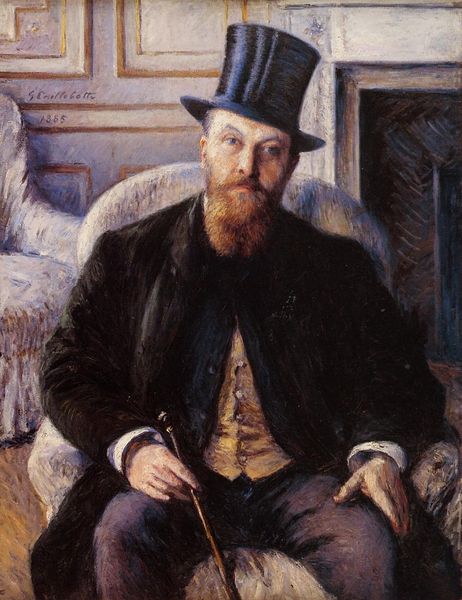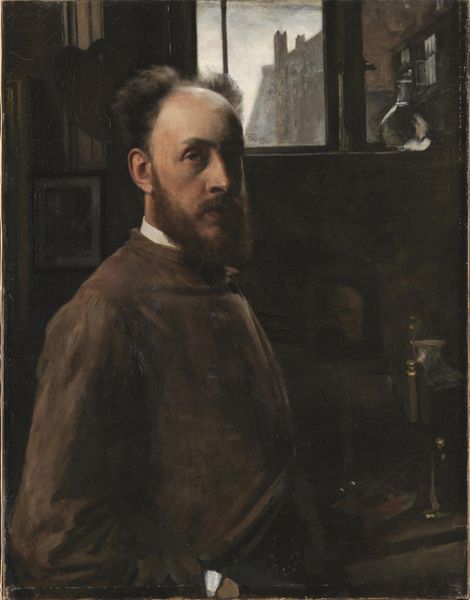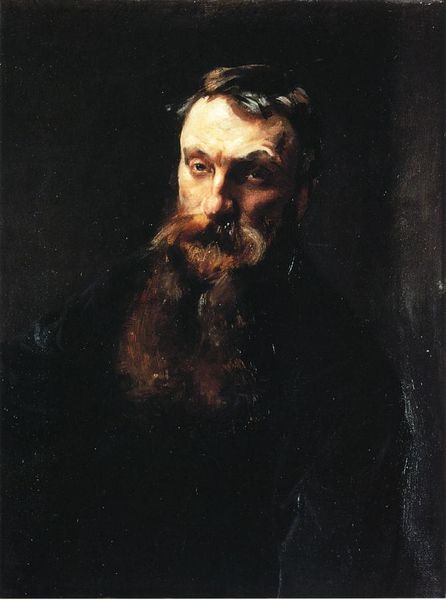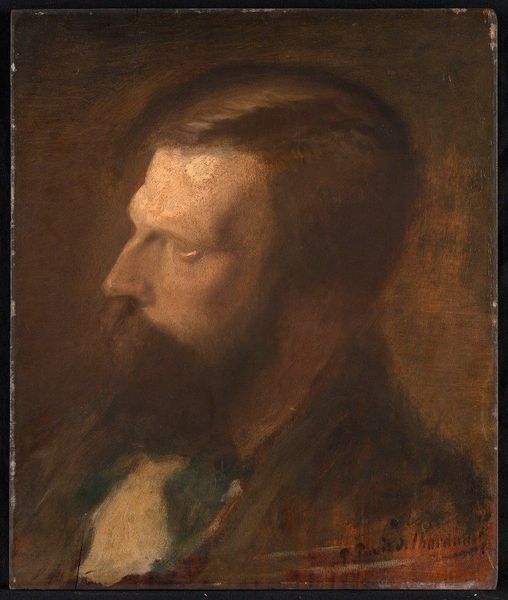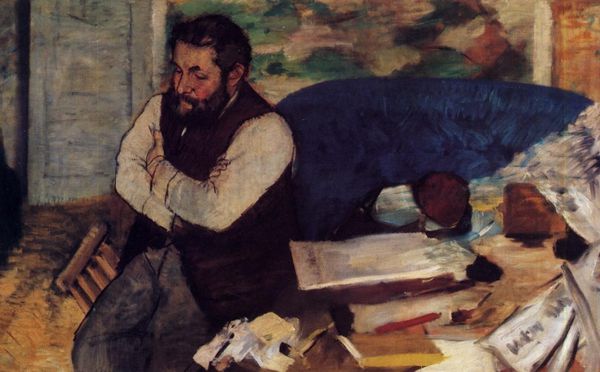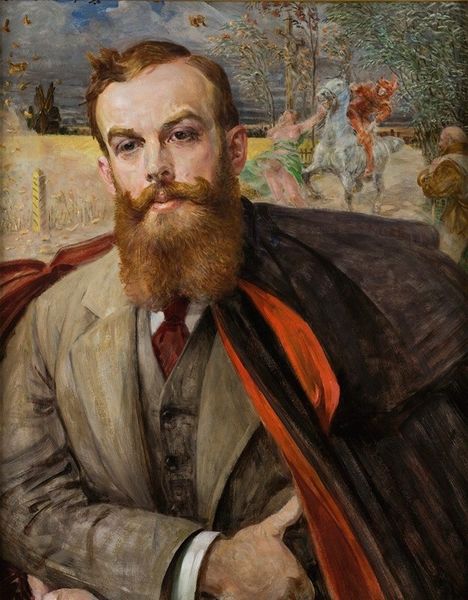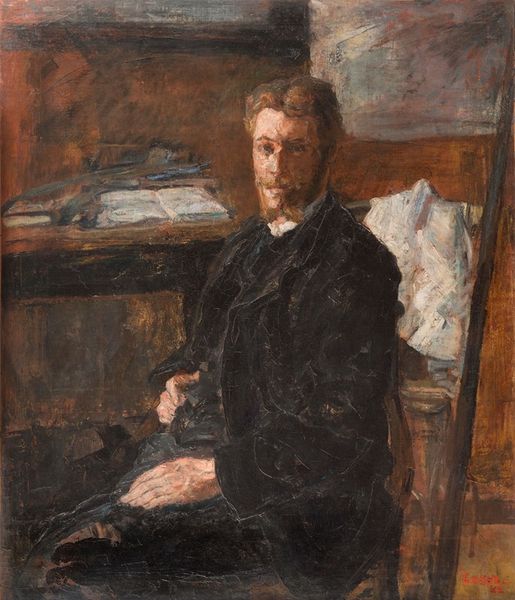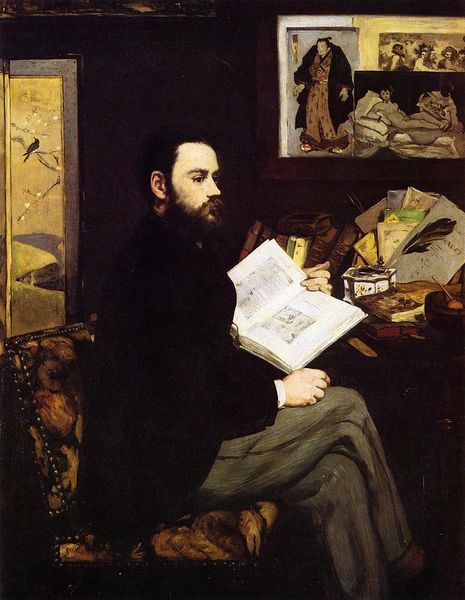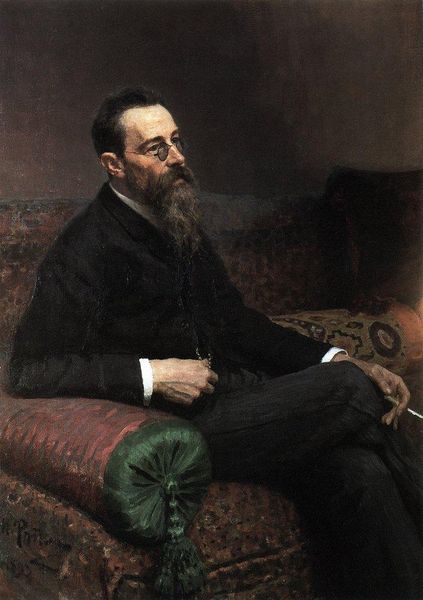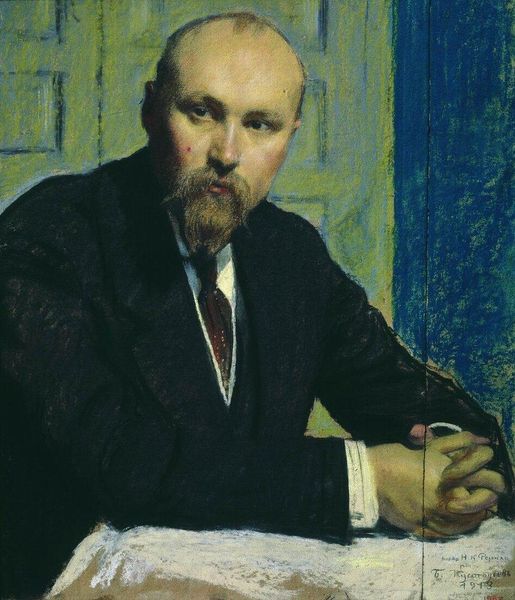
Copyright: Public Domain: Artvee
Arnold Böcklin painted this self-portrait, though the date is unknown, possibly as an attempt to define his artistic identity within the context of 19th-century European art. Consider the visual codes at play. The artist presents himself in a contemplative pose, gazing into the distance. The somber colors and classical architectural backdrop evoke a sense of timelessness and intellectual depth. Böcklin was working in a period where art academies held considerable sway. His artistic vision, rooted in mythology and symbolism, offered a stark contrast to the prevailing trends of realism and impressionism. Böcklin’s art became a response to what he viewed as the increasingly materialistic and superficial values of modern society. His works often presented a critique of contemporary institutions and a yearning for a more spiritual connection with nature and the past. To fully appreciate this self-portrait, it helps to consult the archives of art academies and exhibition records. These resources offer a glimpse into the critical debates that shaped Böcklin’s artistic choices.
Comments
No comments
Be the first to comment and join the conversation on the ultimate creative platform.
